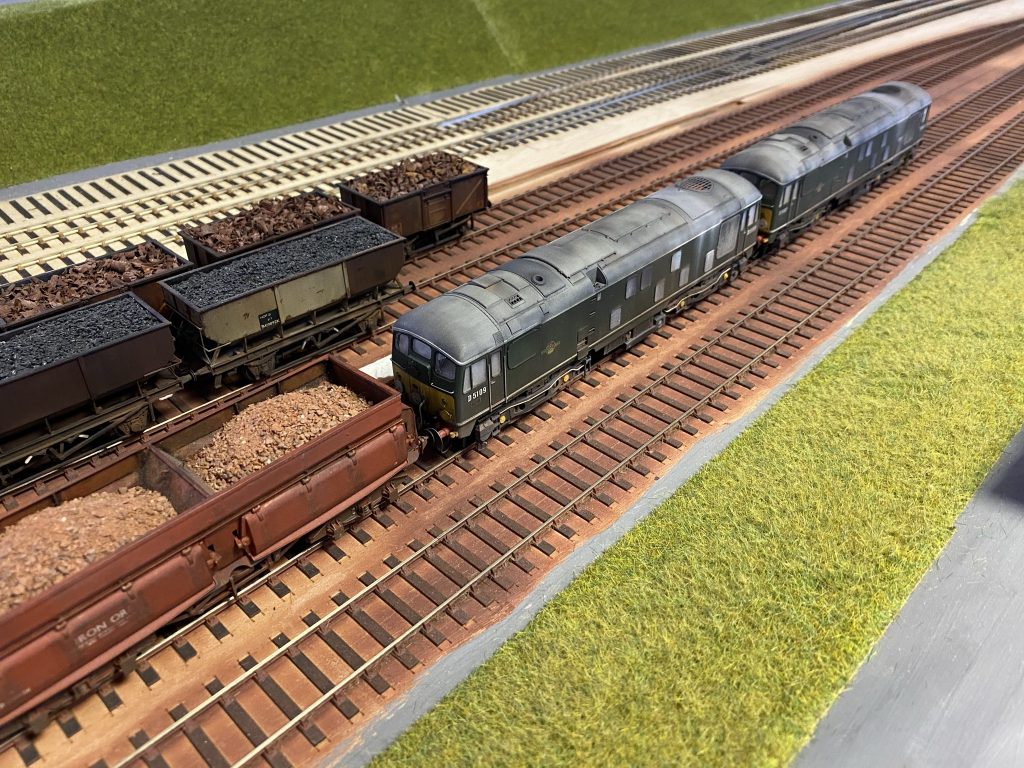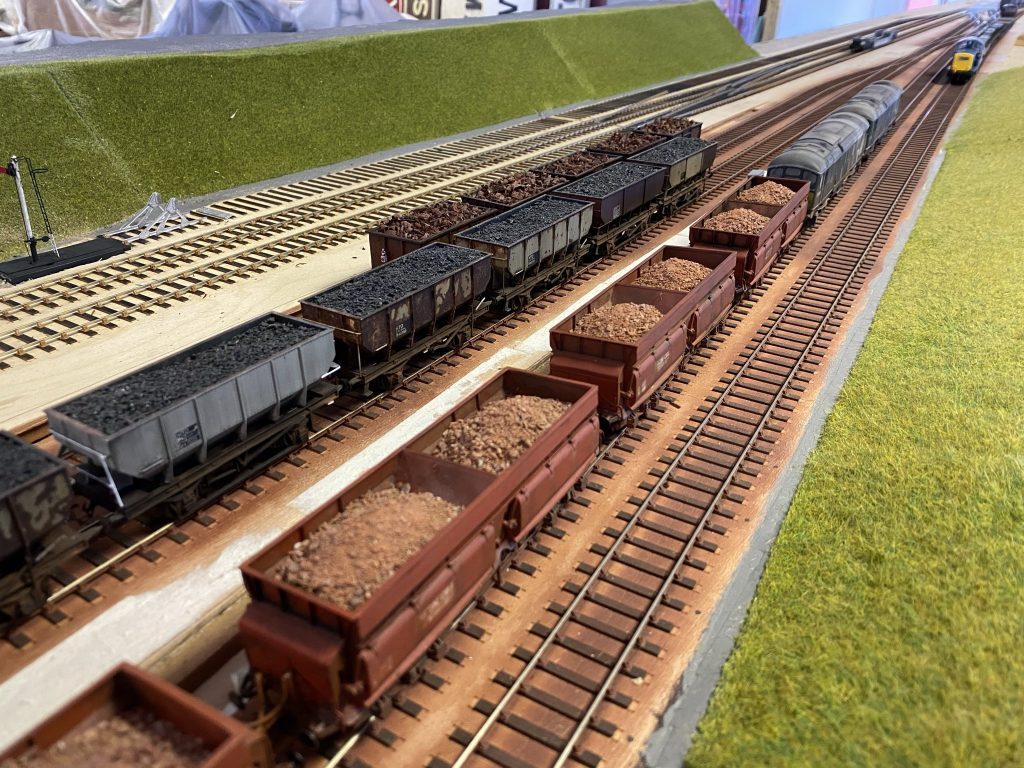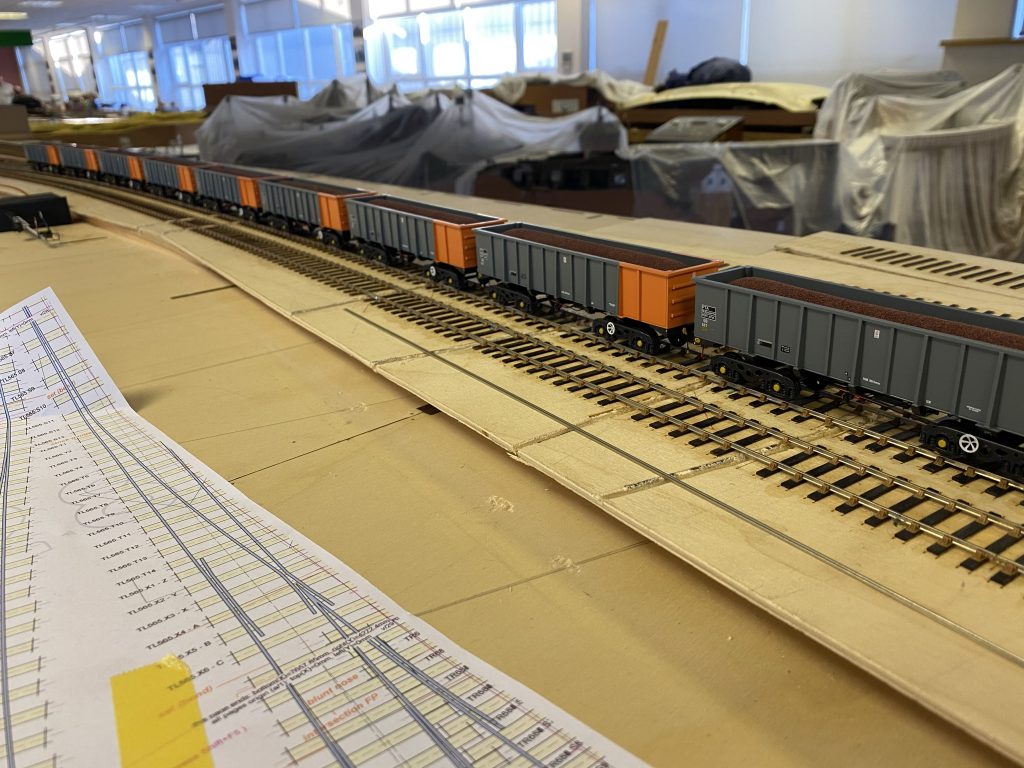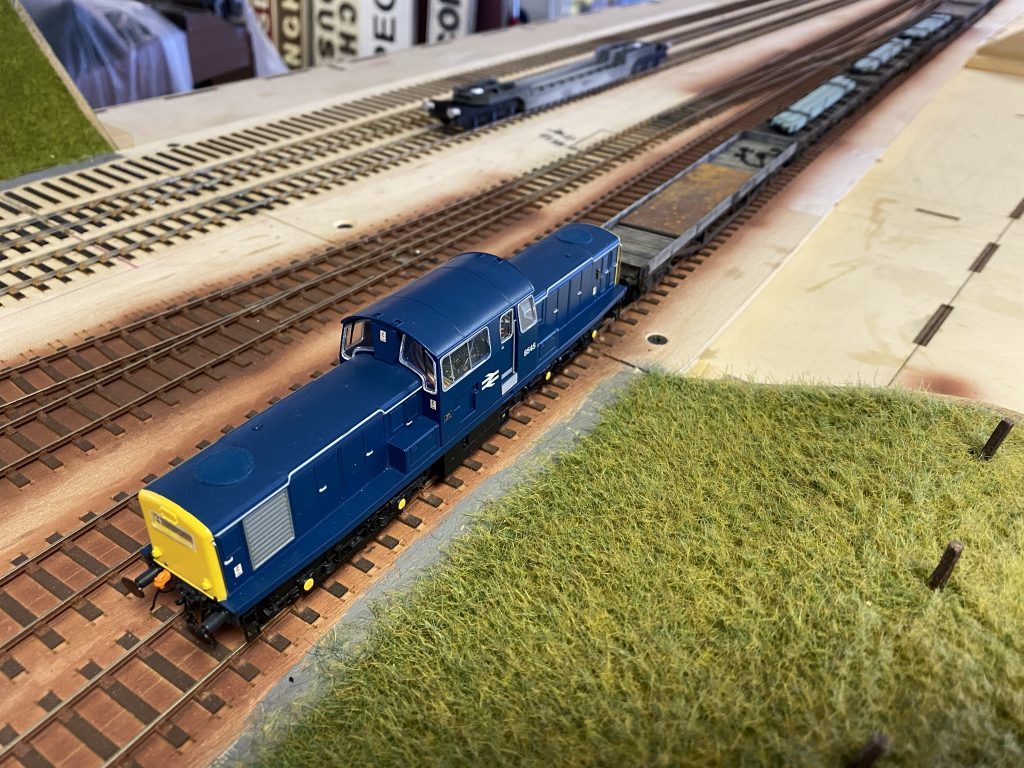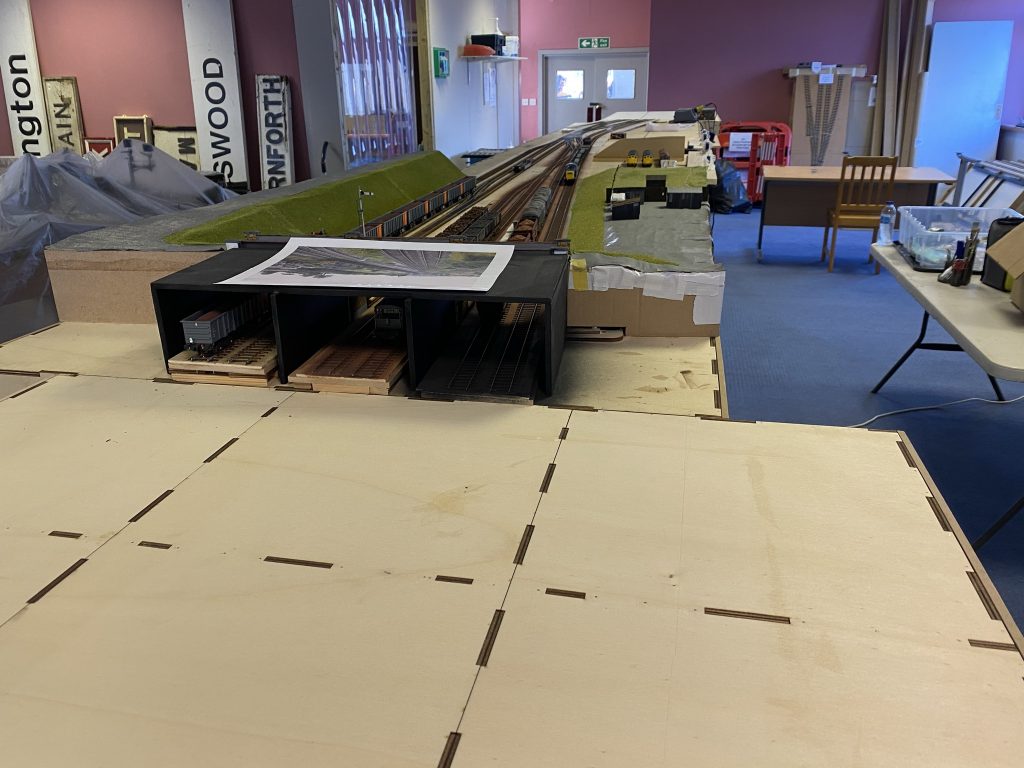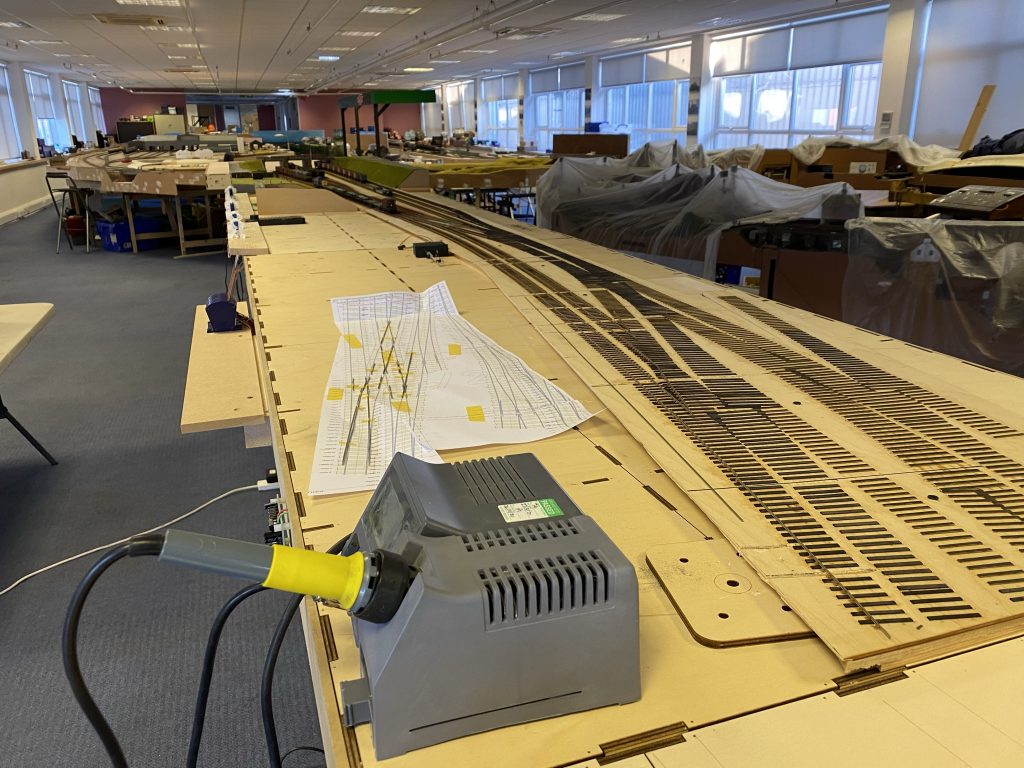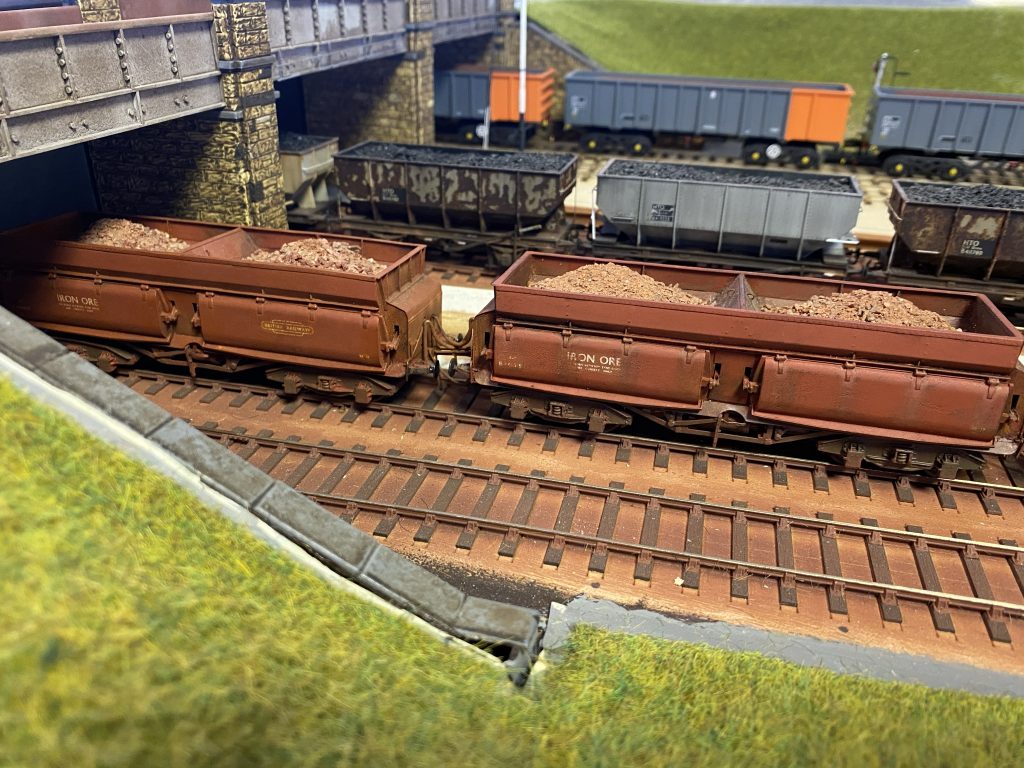Having got back in to model railways around 10 years ago and with no existing stock, I decided to go straight for P4 having dabbled a good few years earlier. My initial efforts were small shunting planks just to see if I could do P4. As it happens, the first layout I built has been to Scalefour North on a couple of occasions as it is now owned by Phil Sutton of Sutton’s Locomotive Works who uses it as a display for his range of Class 24 locos.
South Pelaw Junction is my third and, as my ‘layout of a lifetime’ will be my last, P4 layout and is based on a real location a mile or so away from my house on the Tyne Dock to Consett railway in County Durham and is set in the period 1967 to 1985. Whilst my main interest is in the BR Blue period, the start date of 1967 allows me to run the final 9F hauled iron ore train and, as I like the later Class 60 diesels, there may well be an element of ‘what if’ set in later years.
Note that the layout is still in the early stages of construction and is presented here as such. When it is complete, the layout will be an oval around 42′ * 16′ but, as I am working alone for the most part, I’m starting with an 18′ scenic section with a fiddle yard at each end. This section will be fully operational before I do any work on the rest of the layout. Given its size, the layout does not live at home so progress has been rather slow over the last 12 months as access has proved impossible during lockdown.
Baseboard and Track Construction
The track plan for the initial scenic section is shown below. At each end, a bridge (handily the prototype location has a bridge at each end) will form the scenic break. When the layout expands, to the left, the lines will curve to the fiddle yard and there will be another 80′ or so of scenery on the right hand side.

Baseboards are laser cut plywood from Granger and Hodder and are all a standardised size of 6′ * 3′, a little large but still light enough to be carried by one person. The boards were deliberately made this size to reduce the joins in the scenic section which, as can be seen on the plan, consists of some fairly close packed point work and a lot of initial work was done in Templot to ensure the joins fell in the right places. Legs are adjustable metal trestles from Screwfix.
For my first two layouts, I had used flexi track and turnout kits but for South Pelaw, track, including the plain track is being constructed with plywood sleepers and plastic chairs. The original plan was to stick the Templot plans to the boards and build the track on that but I came across a service offered by Tim Horn who was able, from a CAD file exported from Templot, to ‘etch’ the plan in to 3mm plywood and I’ve built the track directly on top of that. Whilst this may not work for everyone, I’ve found it to be a godsend and there is no paper under the track to get wet when I get round to ballasting.
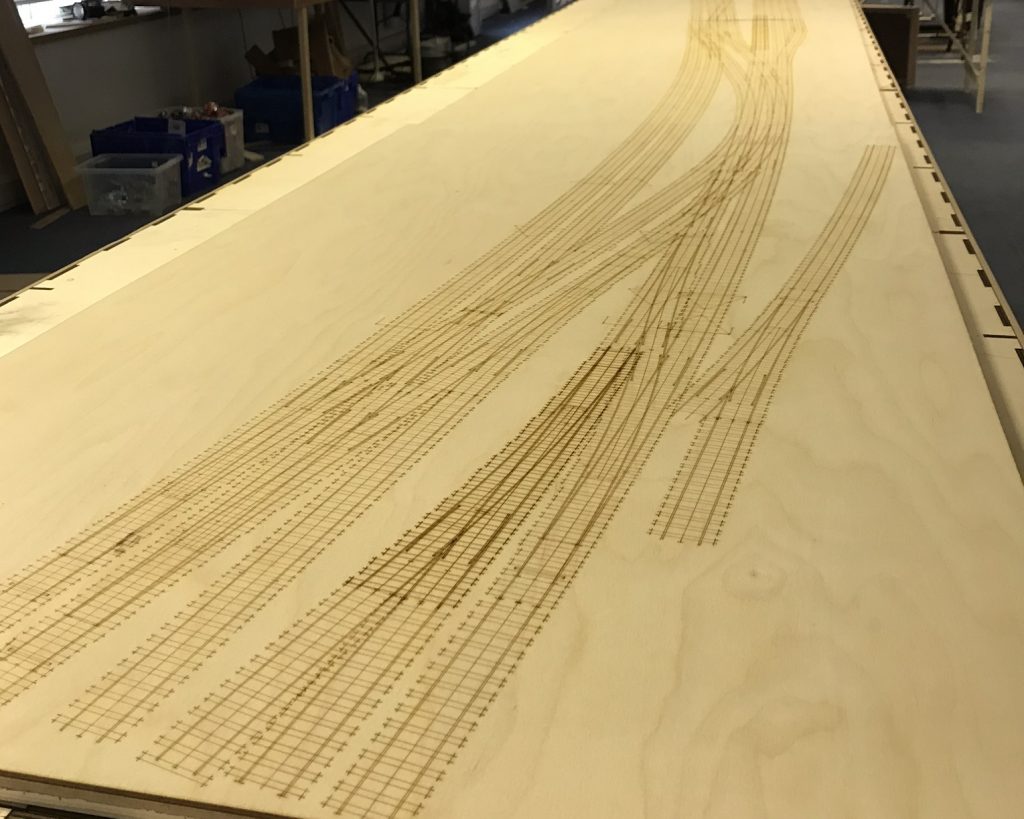
Construction of the track work is underway concentrating, for the most, part on the main lines (the bottom two tracks on the plan. Mistakes aplenty have been made and not all the chairs may be exactly correct but testing so far has proved that it works and rolling stock doesn’t fall off, always a bonus…
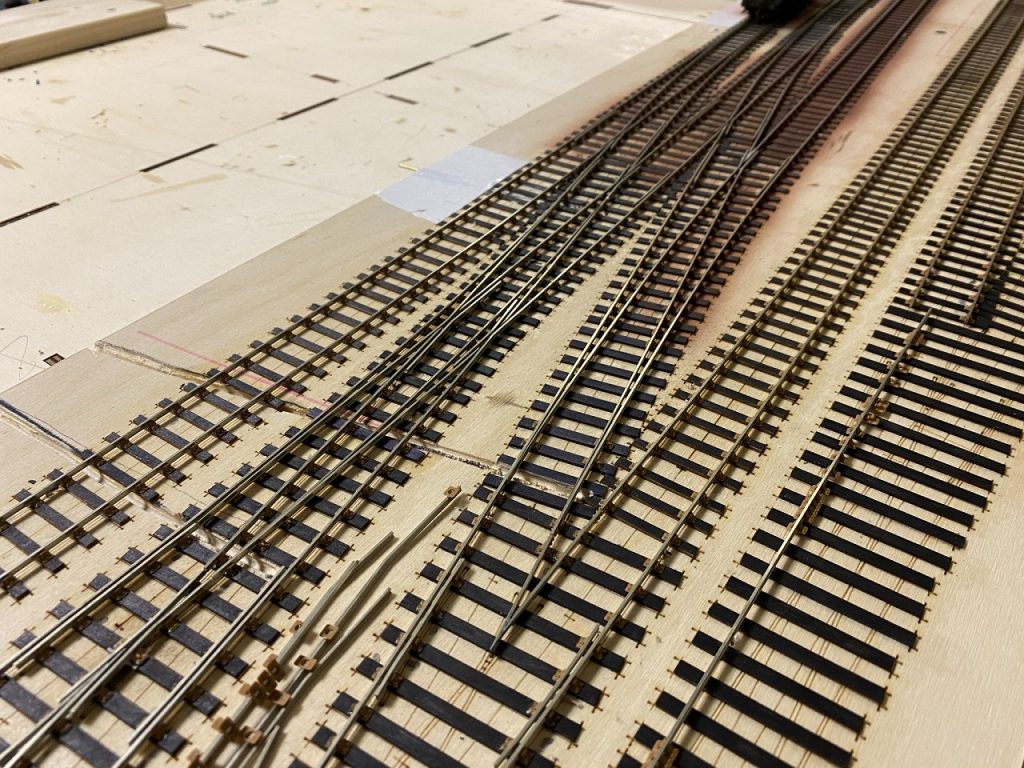
I’m yet to decide on tie bars but the turnouts, and signals will all be controlled from a DCC Concepts lever frame with servos operated using MERG Servo 4 boards which are in the process of being installed. This is all completely separate from the loco control which is DCC.
The, very temporary, lever frame installation, rather a lot more levers left to add…
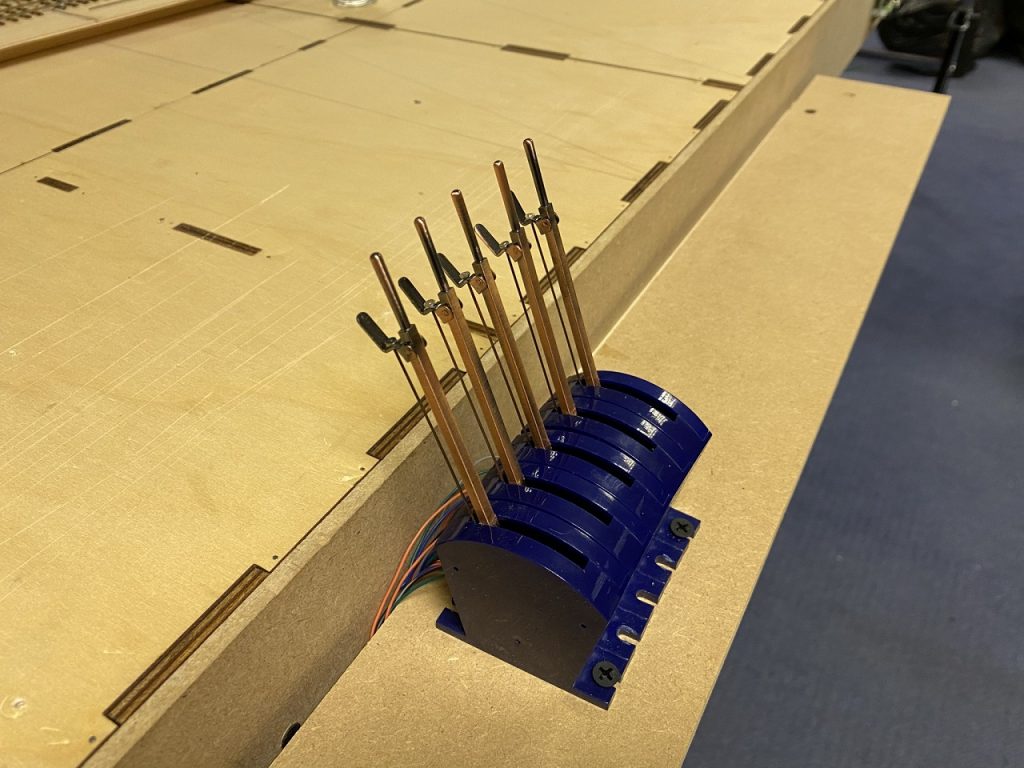
Experience with another layout (actually an EM Gauge version of the same location I am modelling) which also uses servos, has resulted in a decision to go for surface mounted servos operating the turnouts via wire in tube which, I hope, will make any future maintenance easier.
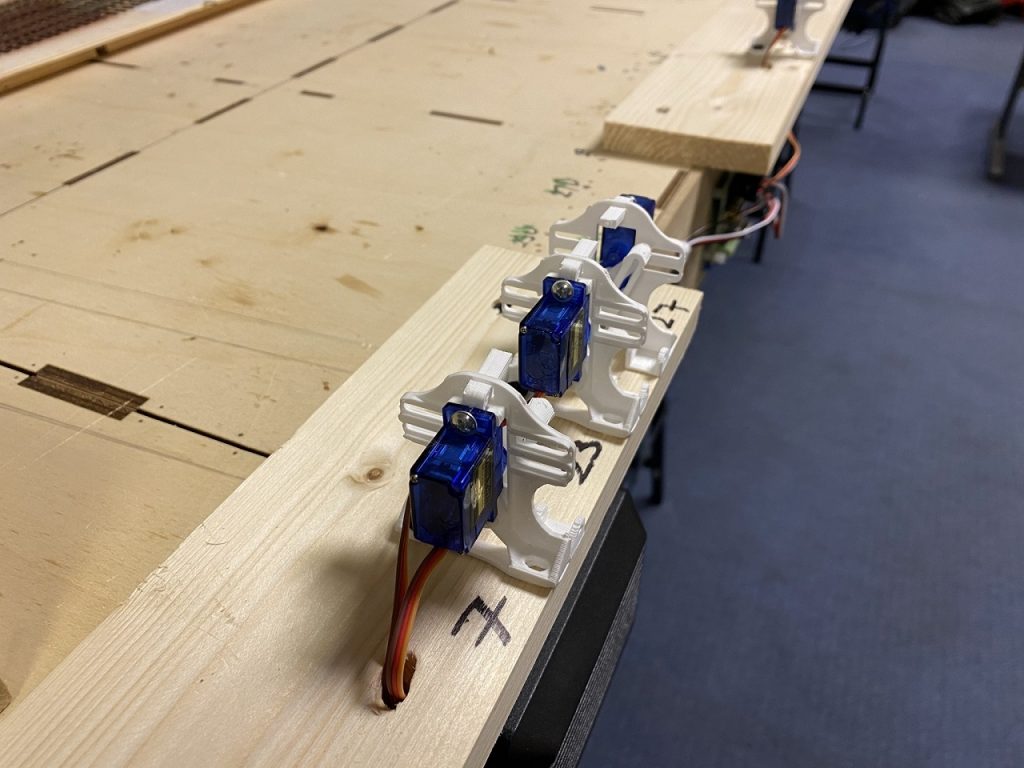
Again, for each of future access, the MERG Servo 4 boards are mounded vertically to the edge of the boards.
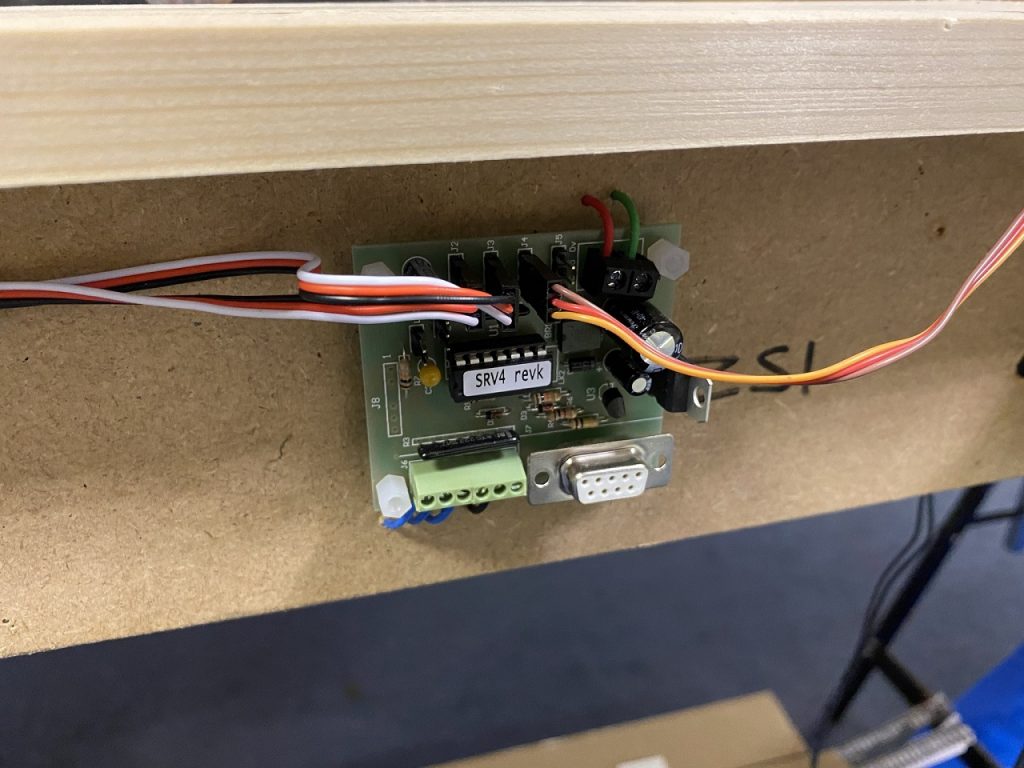
Signalling
With a couple of exceptions, signalling on the line was semaphore right up to closure in the early 1980s so this is necessitating scratch building the signals using a combination of MSE parts where possible and brass strip for the rest. As with the turnouts, operation is to be via servos.
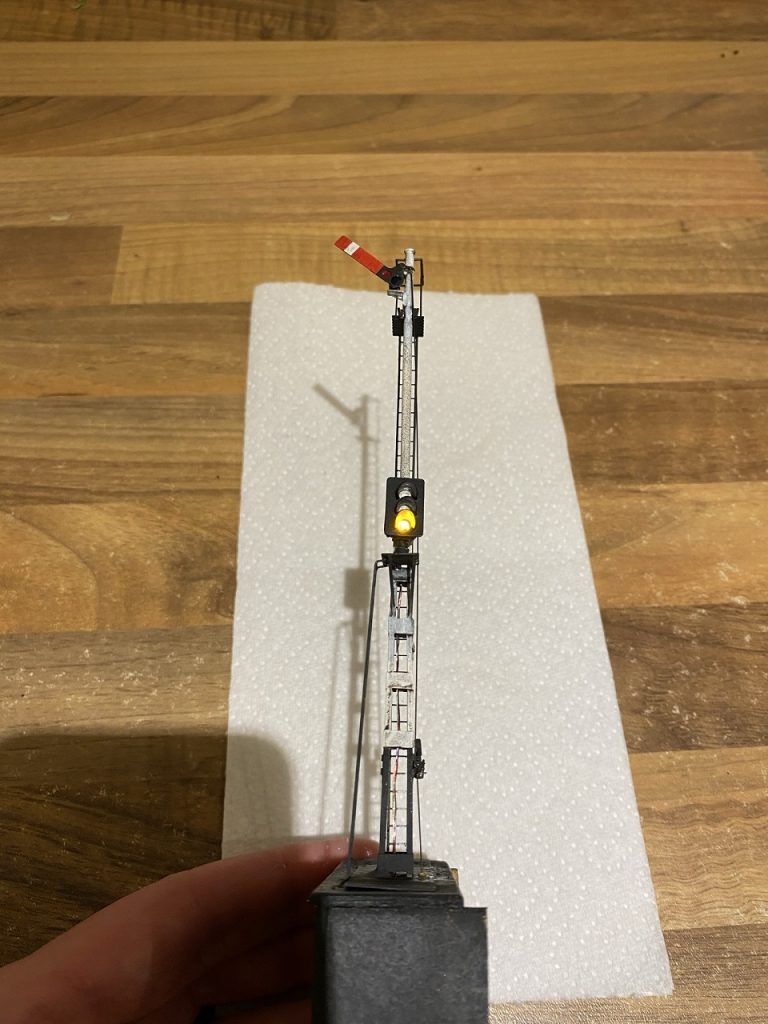
Rolling Stock
Class 24 and 37 diesels dominated the line in the early 1970s and then it was pretty much wall to wall 37s from 1974 onwards. I am, therefore, fortunate that we have the excellent SLW Class 24s and the soon to be released Accurascale Class 37s.
Wagons are a mix of kit built, kit bashed and modified RTR.
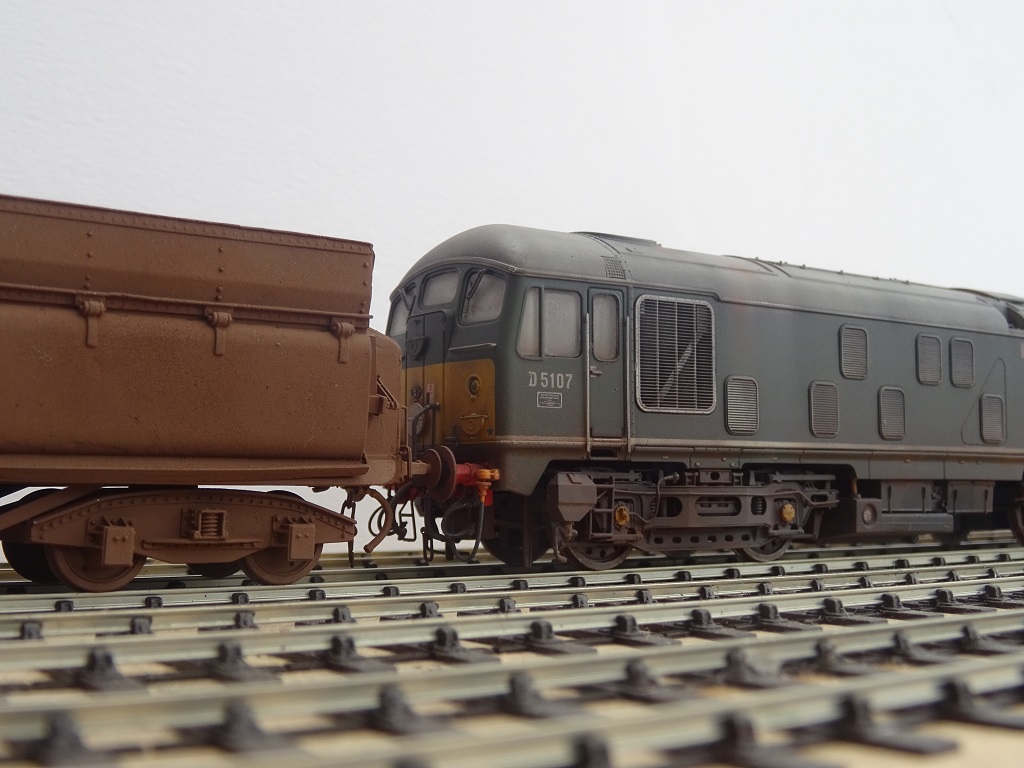
Structures
All structures will be, by necessity, scratch built. A few smaller buildings have been built so far and one of the bridges that will act as a scenic break has also been completed.
A few photos from around the layout
